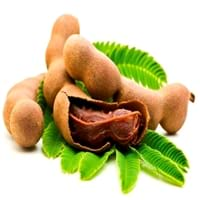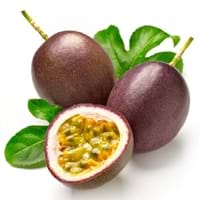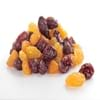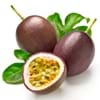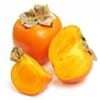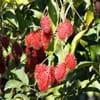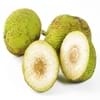Health Benefits
Boosts immune system, Boosts respiratory health, Cancer prevention, Digestive aid, Piles treatment
Asthma treatment, Heart care, Regulates Blood Sugar, Muscle pain relief, Reduces nervous tension
General Benefits
Beneficial in improving nerve function, Protects against parasites and worms, Relieves pain
Boosts immune system, Controls blood pressure, Digestive aid, Fights against infections, Helps in weight loss
Skin Benefits
Anti-aging benefits, Brightens and lightens complexion, Exfoliates skin, Hydrates skin, Treatment of dark spots
Anti-aging benefits, Skin revitalization
Hair Benefits
Prevents hair loss
Protects hair
Allergy Symptoms
Abdominal pains, Breathing difficulty, Dizziness, Eczema, Fainting, Hives, Itching, Nasal congestion, Swelling of face, Tingling sensation in mouth, Vomiting
Anaphylaxis, Breathing difficulty, Decrease in blood pressure, Dizziness, Skin rash, Swelling of face, Swelling of mouth, tongue or lips
Side Effects
Decrease in blood sugar levels, Induces acid reflux, Allergic reaction, Tooth decay, May form gallstones
Stressed heart, Nausea, Vomiting, Possibly unsafe during pregnancy
Best Time to Eat
Along with meal, As a snack in the late afternoon, Don't consume at night and before bed, Strictly avoid empty stomach
As a snack in the late afternoon, Don't consume at night and before bed, Morning time (before lunch), Strictly avoid empty stomach
Vitamin B5 (Pantothenic Acid)
Not Available
Vitamin C (Ascorbic Acid)
Vitamin K (Phyllochinone)
Phytosterol
Not Available
Calories in Fresh Fruit with Peel
Not Available
Not Available
Calories in Fresh Fruit without Peel
Calories in Frozen Form
Not Available
Calories in Canned Form
Not Available
Season
Spring, Summer
All seasons
Varieties
PKM 1, Urigam, Hasanur, Tumkur prathisthan, DTS 1 and Yogeshwari
Australian Purple, Common Purple, Kapoho Selection, Pratt Hybrid, University Selection No. B-74, Waimanalo Selection and Yee Selection
Color
Brown, Reddish-brown
Purple, Yellow
Inside Color
Brown
Yellow
Shape
Curving Cylinder
Oval
Taste
Sour-Sweet
Sweet, Tart
Origin
Africa
Argentina, Brazil, Paraguay
Grows on
Trees
Not Available
Soil Type
Loam, Sandy, Sandy loam, Well-drained
Sandy loam
Climatic Conditions
Humid to dry, Rainfall, Warm to hot climate
Frost free, Sunny, Warm
Facts about
- Tamarind is used to prevent body odor.
- African children use the tamarind seeds in games.
- No cases of tamarind toxicity or allergy reported till date.
- Passion fruit tree can grow up to 20 feet in a year.
- More than 200 species of passion fruit are found near Amazon river.
- Oil extracted from its seeds is used in various cosmetics.
Top Producer
India
Brazil
Other Countries
Africa, Australia, Brazil, China, Mexico, Nigeria, Sudan, Taiwan
Colombia, Ecuador, Indonesia, Kenya, Peru
Top Importer
United States of America
Brazil
Top Exporter
Thailand
Ecuador
Botanical Name
Tamarindus indica
Passiflora edulis
Synonym
Tamarindo, tamarindus
Passiflora edulis f. edulis or Passiflora edulis f. flavicarpa
Subkingdom
Tracheobionta
Tracheobionta
Division
Magnoliophyta
Magnoliophyta
Class
Liliopsida
Magnoliopsida
Subclass
Rosidae
Dillenhidae
Order
Fabales
Malpighiales
Family
Fabaceae
Passifloraceae
Genus
Tamarindus
Passiflora
Species
Tamarindus indica
P. edulis
Generic Group
Tamarind Sub
Passion Flower
Difference Between Tamarind and Passionfruit
We might think that Tamarind and Passionfruit are similar with respect to nutritional value and health benefits. But the nutrient content of both fruits is different. Tamarind and Passionfruit Facts such as their taste, shape, color, and size are also distinct. The difference between Tamarind and Passionfruit is explained here.
The amount of calories in 100 gm of fresh Tamarind and Passionfruit with peel is Not Available and Not Available and the amount of calories without peel is 239.00 kcal and 97.00 kcal respectively. Thus, Tamarind and Passionfruit belong to High Calorie Fruits and High Calorie Fruits category.These fruits might or might not differ with respect to their scientific classification. The order of Tamarind and Passionfruit is Fabales and Malpighiales respectively. Tamarind belongs to Fabaceae family and Passionfruit belongs to Passifloraceae family. Tamarind belongs to Tamarindus genus of Tamarindus indica species and Passionfruit belongs to Passiflora genus of P. edulis species. Beings plants, both fruits belong to Plantae Kingdom.
